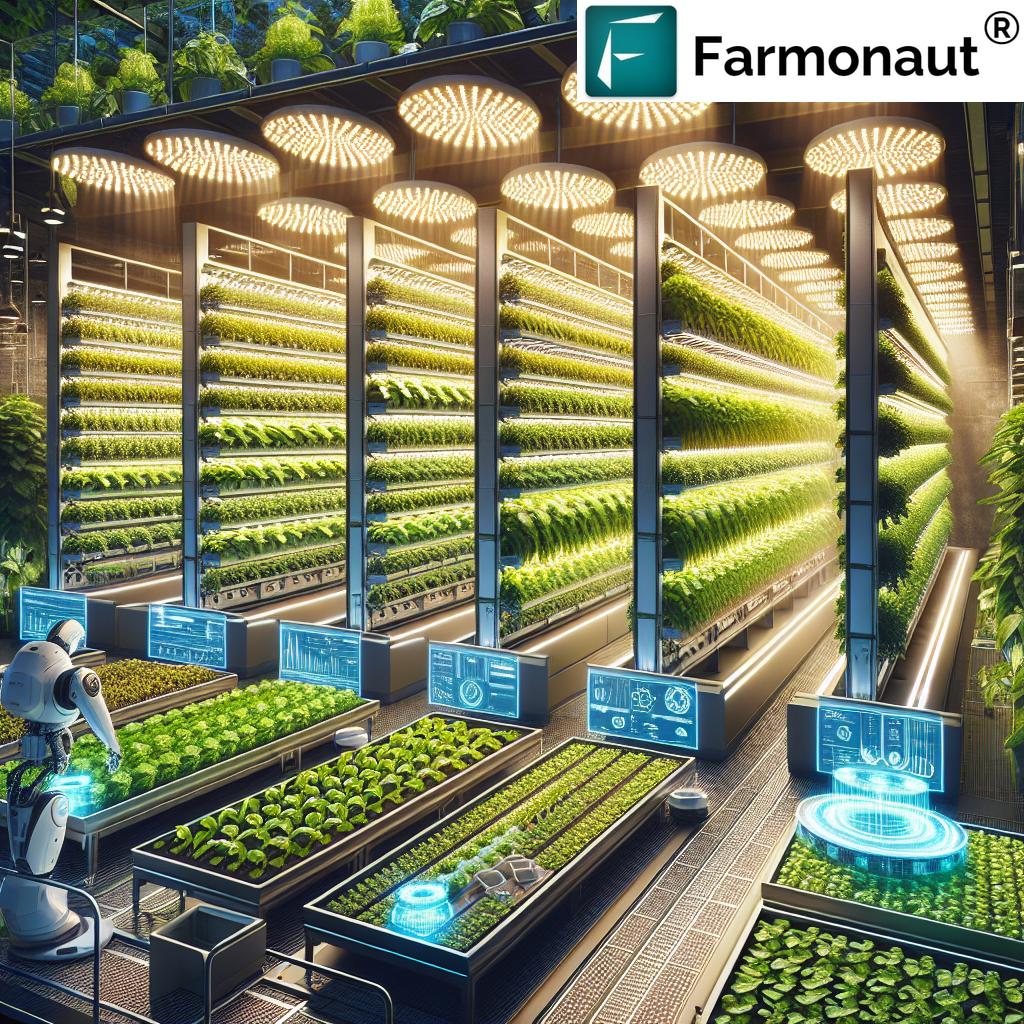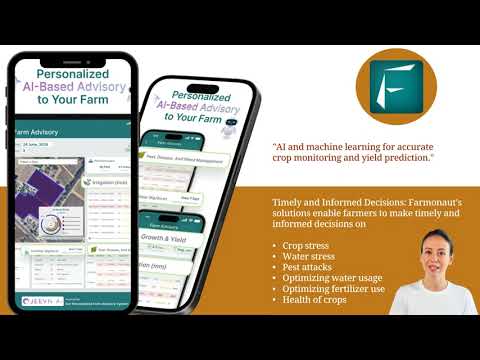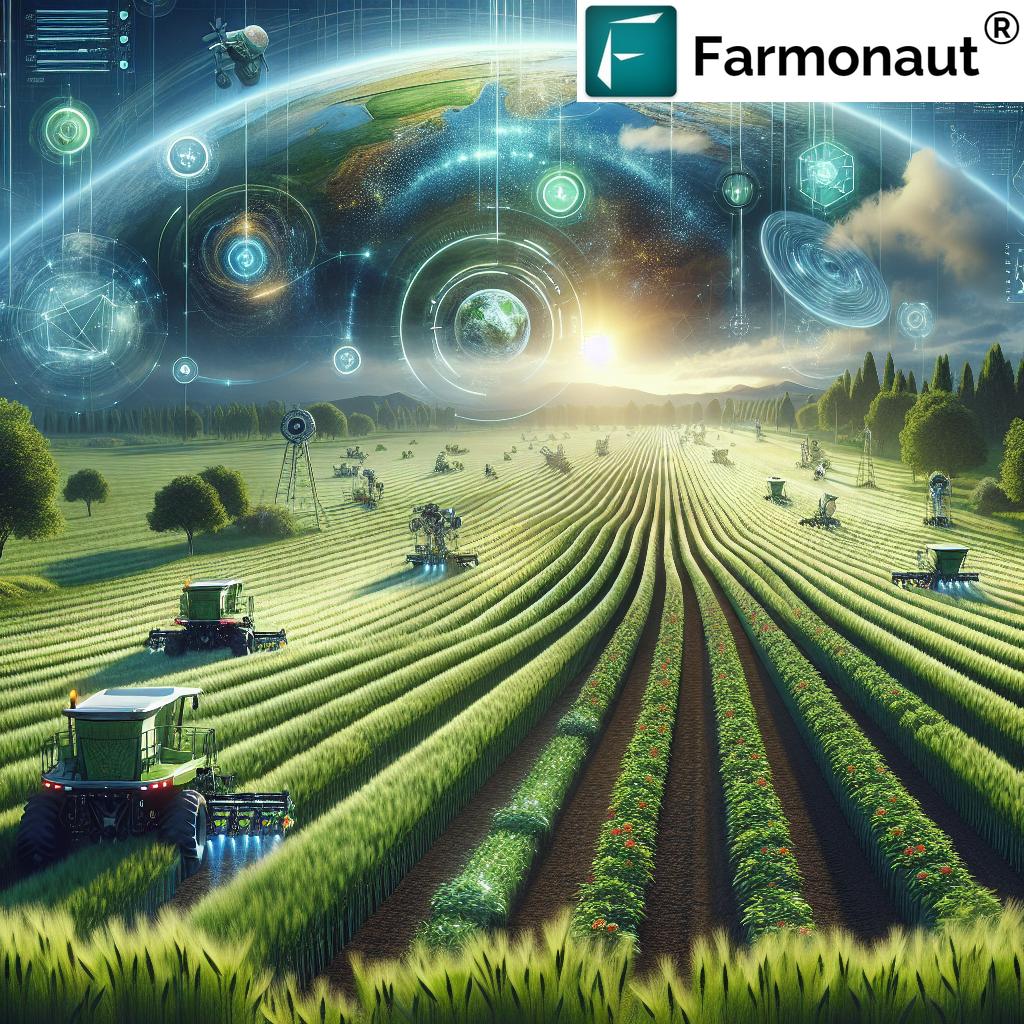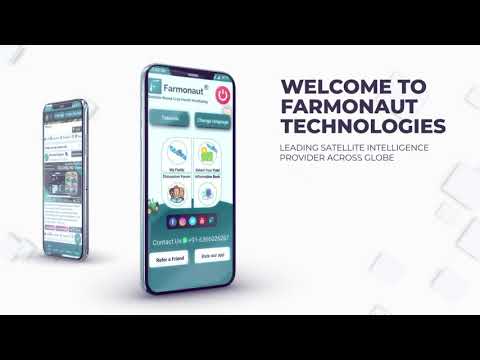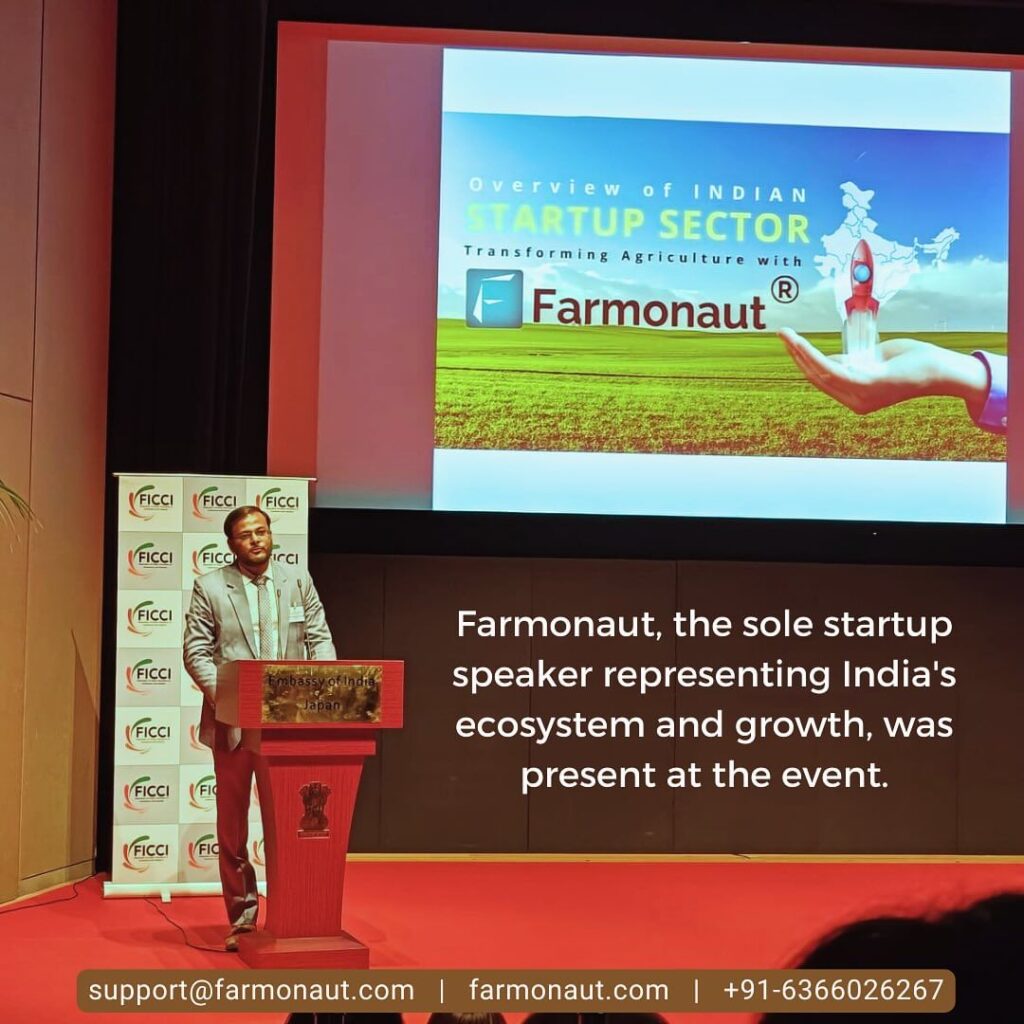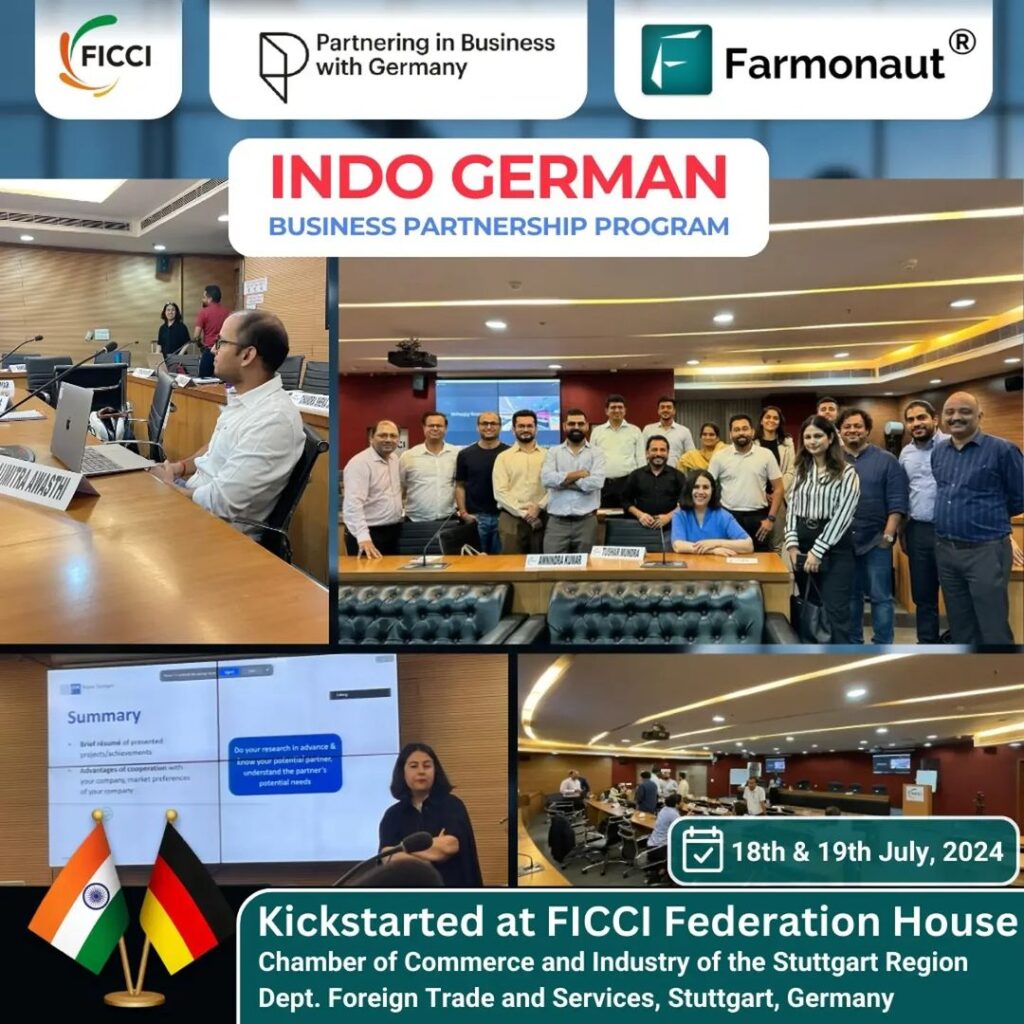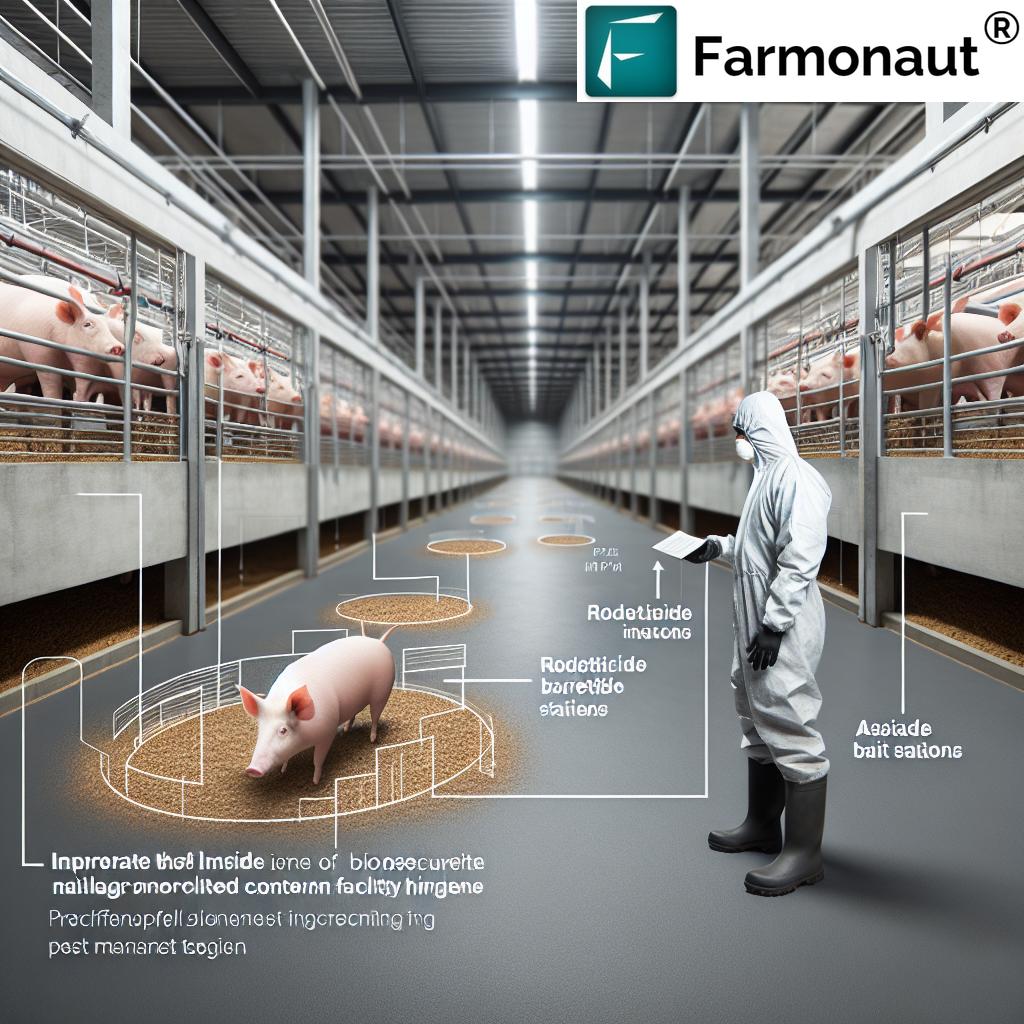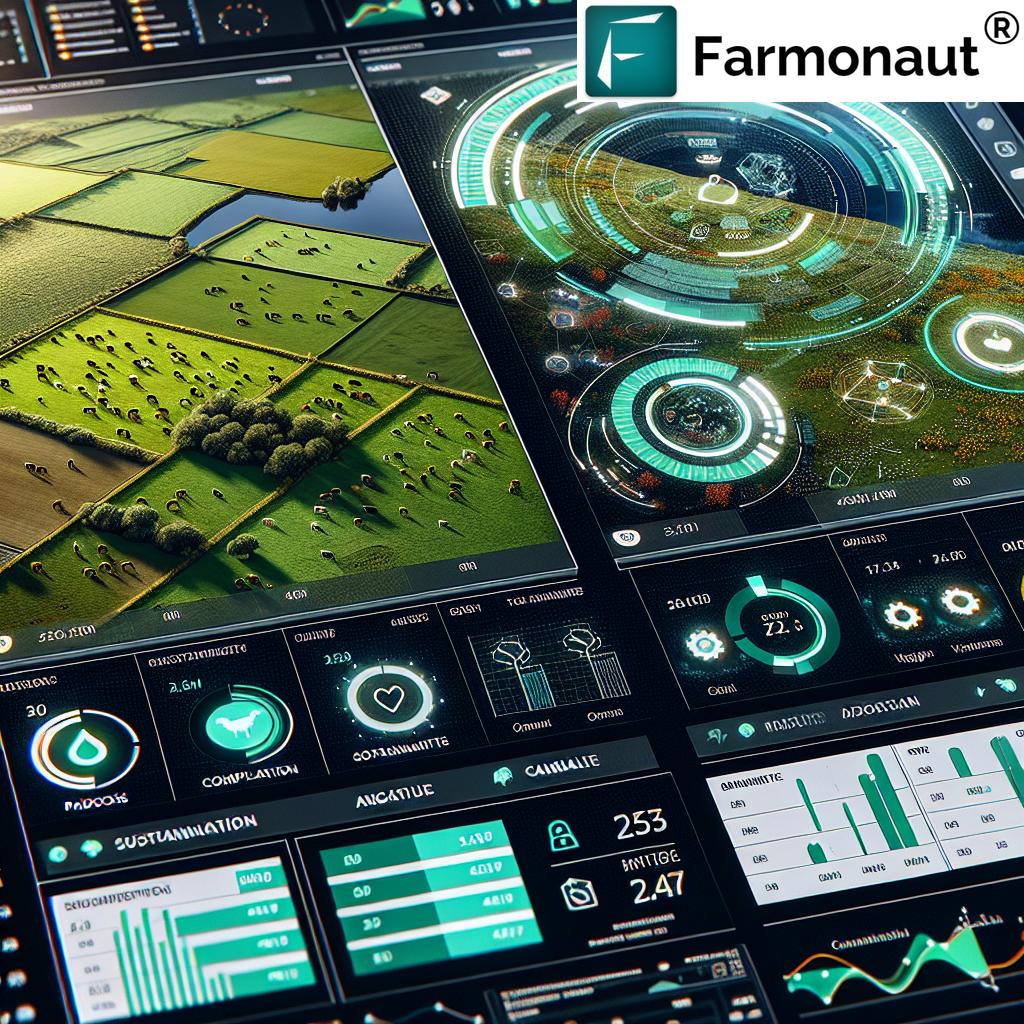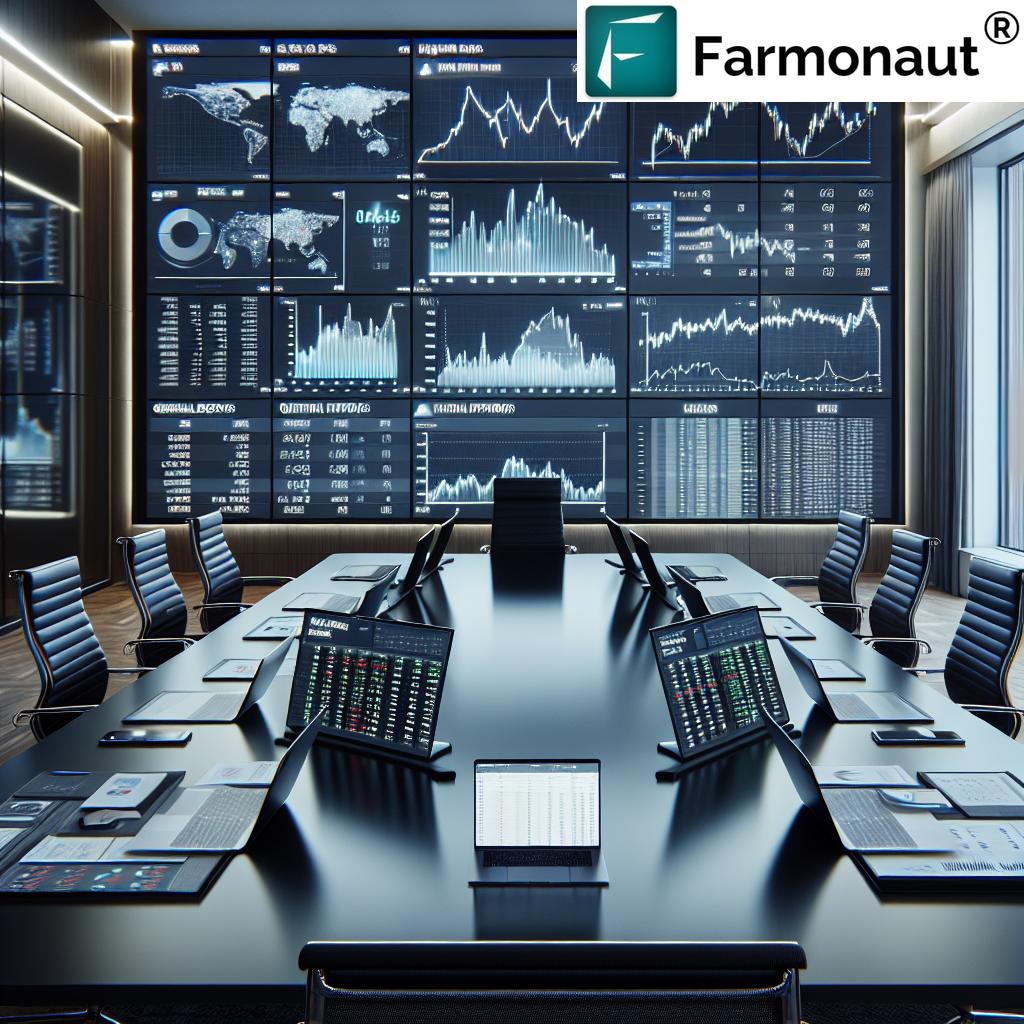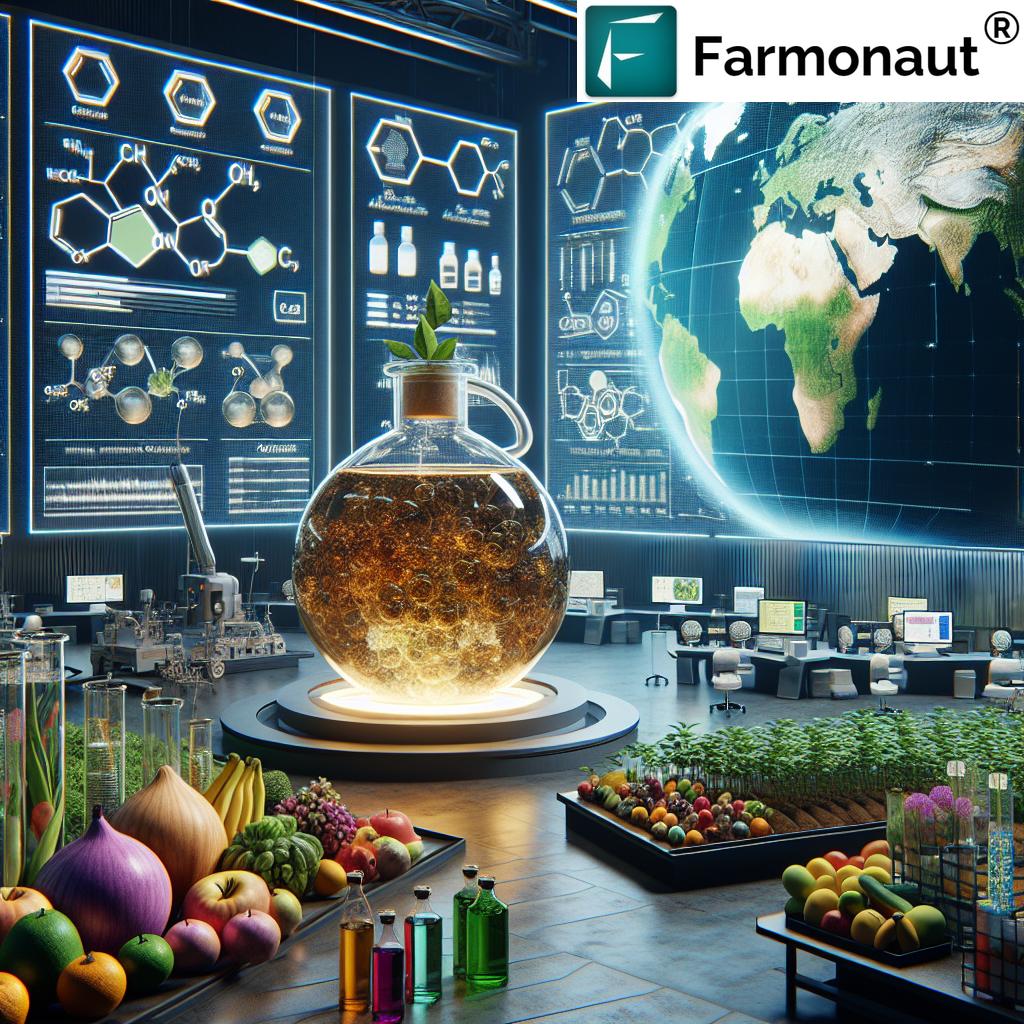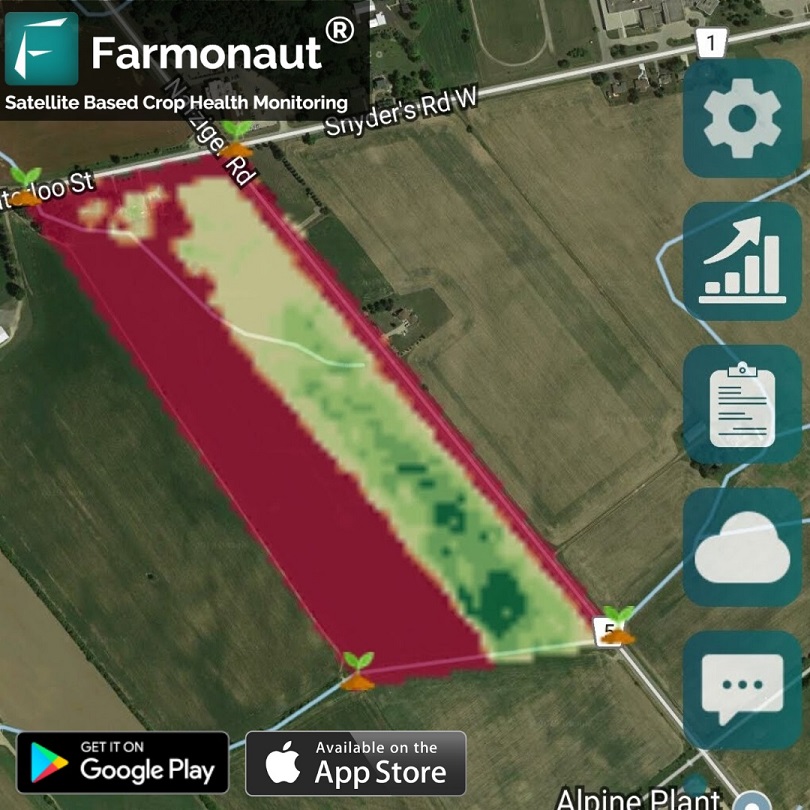Table of Contents
- Introduction: The Agriculture Revolution of 2025
- Trivia: Did You Know?
- Precision Agriculture & Digital Farming
- Autonomous Machinery & Robotics
- Sustainable and Regenerative Practices
- Controlled Environment Agriculture & Vertical Farming
- Alternative Proteins & Plant-Based Diets
- Climate-Smart Agriculture: Resilience & Efficiency
- Blockchain in Agriculture Supply Chain Transparency
- Agri-Fintech Solutions
- Biodegradable & Peat-Free Growing Media
- Data Analytics & Big Data
- Water-Saving Techniques in 2025
- Eco-Friendly Pest Control Solutions
- Urban & Vertical Farming Expansion
- AI in Supply Chain Management
- Biodiversity in Controlled Crop Systems
- Comprehensive Agriculture Trends 2025 Table
- Farmonaut: Transformative Data-Driven Solutions
- Trivia Break
- Frequently Asked Questions
- Conclusion: Embracing the Future of Agriculture
Agriculture Trends 2025: Shocking Innovations Revealed
As we journey further into 2025, the agricultural sector is undergoing a transformative era, propelled by a dynamic blend of technological advancements, environmental challenges, and shifting consumer preferences. Our food system is being redefined by the integration of AI, data analytics, sustainable farming practices, and robust supply chain management. In this comprehensive analysis, let us explore the key trends and innovations that are shaping the future of farming, forestry, and agriculture in 2025 and beyond.
“By 2025, precision farming is projected to increase global crop yields by up to 30% using AI-driven analytics.”
1. Precision Agriculture & Digital Farming: Data-Driven Decisions
Precision agriculture has brought about a true revolution in the way farmers manage their fields and resources. Utilizing a powerful synergy of Internet of Things (IoT) devices, data analytics, and artificial intelligence (AI), we now have real-time visibility into soil conditions, crop health, moisture, and nutrient levels. This data-centric approach allows us to optimize irrigation, fertilization strategies, and even pest control, translating into higher yields and sustainable resource management.
Through the robust integration of digital technologies, such as sensors that monitor real-time field metrics and AI algorithms that analyze and predict crop performance, farmers can identify potential issues before they escalate. According to Kadence research, the digital agriculture market is on a skyward trajectory, aiming to reach $10.2 billion by 2025 with a robust CAGR of 10.9%. This trend not only enables us to maximize productivity and profitability but also helps us reduce waste and environmental impact by optimizing input application.
- IoT sensors monitor:
– Soil moisture, nutrient and pH levels
– Microclimate and weather conditions
– Crop growth stages - AI-driven analytics:
– Predicts optimal harvesting windows
– Identifies disease outbreaks
– Recommends smart irrigation and fertilization
For farmers seeking robust, real-time digital agriculture solutions, Farmonaut offers satellite-based carbon footprint tracking and blockchain-based supply chain traceability—enabling both environmental monitoring and supply chain integrity.
Key Takeaways:
- Precision agriculture leverages real-time data and AI for informed decisions
- Reduced waste and improved yields
- Significant growth potential in the digital agriculture sector
2. Autonomous Farming Machinery & Robotics: The Automated Revolution
The rise of autonomous farming machinery and robotics addresses growing labor shortages and our need for operational efficiency.
From self-driving tractors to robotic harvesters and drones, these advanced machines are revolutionizing how we plant, weed, fertilize, and monitor crop health. Robotic systems equipped with AI and computer vision can identify issues, apply precise treatments, and even predict potential crop threats, resulting in significant productivity gains and reduced operational costs.
According to industry data, the agricultural robots market is projected to reach $11.58 billion by 2025. We are witnessing an unprecedented shift toward fully-automated farms, where technology is embedded at every stage, from soil preparation to harvest logistics, seamlessly integrated into broader farm management systems such as those powered by Farmonaut.
- Autonomous tractors for precision planting and tillage
- Drone-based crop monitoring and agronomic mapping
- Robotic arms for selective weeding and harvesting
- Sensors and IoT devices for real-time machine diagnostics
Farmonaut’s fleet management tools empower agribusinesses to remotely track, optimize, and maintain machinery, further enhancing operational resource efficiency.
3. Sustainable and Regenerative Agriculture: Principles for a Healthy Ecosystem
As environmental challenges like soil degradation and climate variability intensify, regenerative agricultural practices are taking center stage. By focusing on enhancing soil health, increasing biodiversity, and sequestering carbon, these practices not only benefit our crops but also the broader environment.
Core strategies include no-till farming, cover cropping, diverse crop rotation, and integrating livestock for natural fertilization. Studies demonstrate that adopting regenerative farming can increase yields by up to 79% while restoring vital ecosystem services and boosting resilience to climate stress.
- Regeneration of biological soil activity and organic matter
- Agroecology integrates ecological principles with modern farming
- Reduced need for chemical inputs and pesticides
Those working toward environmental, regulatory, and carbon compliance benefit from Farmonaut’s carbon footprinting solutions, which monitor and optimize sustainability efforts in actionable, data-driven ways.
4. Controlled Environment Agriculture & Vertical Farming: Maximizing Urban Food Production
With global urbanization and diminishing arable land, controlled environment agriculture (CEA) and vertical farming represent cutting-edge technologies that enable us to grow crops outside traditional farm boundaries. By utilizing stacked layers and controlled indoor environments, we can achieve year-round crop production—entirely independent of external weather conditions.
Modern vertical farms deploy hydroponic and aeroponic systems, leveraging up to 95% less water and eliminating the use of chemical pesticides. According to Jiffy Group research, the vertical farming market is set to grow at a 19.7% CAGR, estimated to hit $13.7 billion by 2029.
- Consistently high-quality, pesticide-free produce
- Water savings and reduced fertilizer runoff
- Efficient land use in urban centers
- Enables production of specialty crops, berries, microgreens, mushrooms
Urban vertical farms are making healthy food more accessible while supporting sustainability—a win for both cities and the environment.
“Vertical farming can use up to 95% less water than traditional agriculture, revolutionizing urban food production by 2025.”
5. Alternative Proteins & Plant-Based Diets: Meeting New Consumer Demands
Rising consumer demand for ethical and sustainable food sources has fueled the rapid development of alternative proteins. Today, we find plant-based meats, lab-grown proteins, and even insect-based foods entering mainstream markets.
- Farmers increasingly cultivating soybeans, peas, and other high-protein crops
- Rise in research and development for scalable plant protein extraction
- Lab-grown meat reducing reliance on animal agriculture, water, and land use
These new proteins reduce environmental impact and support biodiversity, marking a significant shift in global agriculture and food production in line with consumer preferences.
6. Climate-Smart Agriculture: Building Resilience for a Changing World
As we confront the realities of climate change, climate-smart agriculture focuses on building resilience, adapting to unpredictable weather events, and reducing greenhouse gas emissions. Strategies in this domain include:
- Development of drought- and heat-resistant crop varieties
- Implementation of efficient water management and smart irrigation technologies
- Agroforestry—integrating trees into agricultural systems for soil health and microclimate regulation
Policies such as the European Union’s new subsidy plans encourage the adoption of practices that save water and reduce waste. Farmonaut supports these efforts with satellite-based crop verification tools for insurance and loan access, especially crucial for smallholder farmers facing climate risks.
7. Blockchain in Agriculture Supply Chain: Unprecedented Transparency
The integration of blockchain technology into agriculture supply chains is redefining transparency, traceability, and chain of custody for food from farm to table. Blockchain provides a secure, immutable ledger that records every transaction and stage in the supply chain.
- Track crops and processed goods through every supply chain node
- Reduce fraud and product mislabeling
- Increase consumer trust
Products can be traced back to specific farms, with all associated data—irrigation, fertilization, climate conditions—captured in the record for regulatory and brand integrity. Farmonaut’s blockchain-powered traceability system is designed for seamless industry adoption.
Developers and agribusinesses can directly integrate real-time satellite and weather data into their platforms for advanced data analytics through Farmonaut API and review the capabilities on the API Developer Docs.
8. Agri-Fintech Solutions: Empowering Farmers with Smarter Finances
The intersection of financial technology (fintech) and agriculture—known as agri-fintech—is empowering farmers globally, providing:
- Better access to credit and farm insurance products
- Mobile-based applications for market insights and risk management
- Data-driven loan eligibility assessments, leveraging satellite and crop analytics
Such innovations allow for more robust farm business planning, efficient market participation, and a safety net against disasters. The role of solutions like Farmonaut’s satellite-based crop loan and insurance verification is pivotal in making finance accessible and reducing fraud for smallholder and commercial farmers.
9. Biodegradable & Peat-Free Growing Media: Advancing Environmental Sustainability
Increasing environmental regulation and consumer awareness have accelerated demand for biodegradable and peat-free growing media. Traditional peat extraction damages ecosystems, while newer materials such as coconut coir, hemp fiber, and wood-based substrates offer sustainable alternatives.
- Lower environmental impact and reduced greenhouse gas emissions
- Faster decomposition and easier soil integration
- Support for circular economy principles
Such media are integral to modern CEA and organic farming systems. Their mainstream adoption aligns with regulatory compliance and sustainable agriculture policy objectives.
10. Data Analytics & Big Data: Insights for Enhanced Decision-Making
Analyzing large agricultural datasets is essential for optimizing the entire food supply chain. Big data analytics allow us to:
- Predict market trends and future demand
- Monitor performance and efficiency across the chain
- Quickly identify waste and inefficiencies
- Make informed decisions in real-time
With the increase of sensor and satellite data, AI and machine learning algorithms can produce actionable insights directly to farmers and supply chain managers.
For actionable, AI-powered agricultural data analytics, Farmonaut’s platform delivers critical insights—including real-time crop health monitoring and expert advisory—via web and mobile apps, API, and user-friendly dashboards.
11. Water-Saving Techniques in 2025: Optimizing a Scarce Resource
With water scarcity a pressing concern—especially in regions like Nigeria and urban centers—smart irrigation technologies are indispensable in preserving this critical resource.
- Smart irrigation systems use IoT sensors to monitor soil moisture and weather to deliver water only where needed
- Drip irrigation reduces water loss via evaporation/ run-off
- Drought-tolerant crop varieties minimize overall consumption
According to AP News reports, regions facing the challenges of water stress are leading the way in adoption of precision and analytics-driven water-saving solutions.
12. Eco-Friendly Pest Control Solutions: Minimizing Chemical Impact
To enhance environmental sustainability and promote biodiversity, the industry is embracing eco-friendly pest control solutions. With innovations such as:
- Biological control agents (beneficial insects and microbes)
- Pheromone traps for targeted pest management
- Integrated Pest Management (IPM) strategies to reduce pesticide dependence
Adopting these methods helps preserve the environment, reduce chemical residues, and create more sustainable food production systems.
13. Urban & Vertical Farming Expansion: Feeding Future Cities
The geographical concentration of populations in mega-cities is accelerating the rise of urban agriculture and vertical farming as essential solutions for local food security.
- Local production reduces supply chain footprint, emissions, and waste
- Controlled environment systems enable year-round harvests
- Shorter distribution chains deliver fresher, healthier produce to consumers
This trend also includes rooftop farms, community gardens, and high-density vertical crop systems.
Industry leaders forecast rapid expansion of such farms in urban landscapes by 2025.
14. Artificial Intelligence in Supply Chain Management: Optimizing Agricultural Chains
Artificial intelligence (AI) is ushering in unprecedented efficiency and accuracy in agricultural supply chain management. Tasks now automated by AI-driven analytics systems include:
- Demand forecasting and dynamic pricing
- Market and climate trend predictions
- Inventory optimization and waste reduction
- Route and delivery scheduling improvements
Thanks to AI’s predictive power, we reduce losses, improve profitability, and respond swiftly to market and weather disruptions.
(Syngenta Group trends report)
15. Biodiversity in Controlled Crop Systems: Enhancing Resilience
Within controlled environment agriculture and advanced greenhouses, diversification is emerging as a competitive advantage. Farms are venturing beyond leafy greens to cultivate berries, mushrooms, and specialty herbs, which:
- Increase biodiversity and ecological stability within closed systems
- Enable entry into higher-margin food markets
- Boost consumer choice and adapt to evolving food preferences
This trend also supports ecosystem services and acts as a model for resilient agricultural development in the face of global change.
Trends Comparison Table: Agriculture Innovations 2025
| Innovation | Estimated Adoption Rate by 2025 (%) | Key Benefits | Sustainability Impact | Example Data Usage |
|---|---|---|---|---|
| Precision Farming | 40% | Higher yields, reduced waste, lower costs | High | Satellite data, sensor analytics, AI yield prediction |
| Vertical Farming | 10% | 95% less water use, urban production, year-round harvests | High | Environmental controls, growth optimization, real-time crop data |
| AI-driven Analytics | 30% | Predictive insights, smart irrigation, resource optimization | Medium-High | Big data, AI pattern recognition, IoT feedback |
| Autonomous Machinery | 15% | Reduced labor, increased accuracy, continuous operation | Medium | Telematics, machine learning, real-time performance |
| Climate-Smart Agriculture | 25% | Resilience to climate, water savings, carbon reduction | High | Weather data, crop modeling, emissions tracking |
| Blockchain Supply Chain | 8% | Transparency, reduced fraud, end-to-end traceability | Medium | Immutable records, supply chain event logging |
| Biodegradable Media | 12% | Lower emissions, ecosystem restoration | High | Soil and crop health analytics |
| Agri-Fintech | 18% | Access to credit, risk management, insurance | Medium | Loan verification via satellite analytics |
Farmonaut: Transformative Data-Driven Solutions for Future Agriculture
Farmonaut emerges as a leading innovator, making precision agriculture and advanced farm management both affordable and accessible for farmers, agribusinesses, and entire food supply chains.
- Satellite-based crop monitoring: Visualize and manage crop health with NDVI and multispectral imagery for real-time< Analysis
- AI-powered advisory: The Jeevn AI system personalizes weather forecasts, crop recommendations, and irrigation alerts to increase yields and resource efficiency
- Blockchain traceability: Track every step of your production chain and share authenticated records with end-consumers and regulators
- Fleet and resource management: Optimize operations with machinery management tools—from vehicle tracking to safety and maintenance alerts
- Carbon footprint tracking: Ensure sustainability and environmental compliance by quantifying on-farm emissions and strategizing reduction
Farmonaut solutions are delivered via Android, iOS, and web apps, as well as APIs for third-party integration. From individual farmers to large institutions, Farmonaut’s modular approach means you only pay for what you use—perfect for large-scale and plantation management, or even government and corporate needs.
Try Farmonaut now:
APIs for Fintech, Research, and Agribusinesses: Access robust weather, satellite, and supply chain data via API or API documentation.
Frequently Asked Questions (FAQ): Agriculture Trends 2025
1. What is precision agriculture and how does it benefit farmers?
Precision agriculture uses digital technologies such as sensors, IoT devices, and AI-driven analytics to monitor real-time crop and soil conditions. This allows farmers to apply inputs like water and fertilizer only where needed, increasing yields and resource efficiency.
2. How does vertical farming save water?
Vertical farming utilizes closed-loop hydroponic or aeroponic systems, dramatically reducing water use (up to 95% less than field agriculture). It also minimizes evaporation and recycles nearly all water back to the plants.
3. What is blockchain in agriculture supply chains?
Blockchain creates a secure, immutable record for every step in the agricultural supply chain, enabling transparent tracking of food from farm to consumer—improving food safety and trust.
4. How does Farmonaut support climate-smart and regenerative agriculture?
Farmonaut leverages satellite data and AI analytics to provide actionable insights for soil health, carbon footprinting, water management, and crop monitoring, enabling sustainable agriculture and improved resilience.
5. Can smallholder farmers access these technologies affordably?
Yes! Farmonaut democratizes access through affordable subscription packages, offering scalable solutions, real-time monitoring, and expert advisory, via web, Android, and iOS apps.
6. Why is data analytics so important for the future of farming?
Data analytics helps detect trends, optimize inputs, predict yields, and rapidly respond to environmental changes—making farming more efficient, productive and resilient.
Conclusion: Embracing the Data-Driven Agricultural Future
The agriculture sector in 2025 stands at the crossroads of innovation, technology, and sustainability. From precision agriculture powered by AI and IoT to vertical farming and regenerative practices, the convergence of these trends will reshape what it means to produce food for a growing global population. The seamless integration of digital agriculture trends 2025 ensures we can meet ambitious goals for productivity and environmental stewardship.
As we move forward, stakeholders across the industry—farmers, agribusinesses, policy-makers, and consumers—must embrace the latest technologies and data-driven solutions for a more resilient, transparent, and sustainable food system. Farmonaut stands at the forefront, delivering real-time analytics, affordable satellite monitoring, and actionable insights for all. By adopting these innovations, we secure a future where food production is optimized, ecosystems are restored, and every decision is informed by the best data and technology available.


